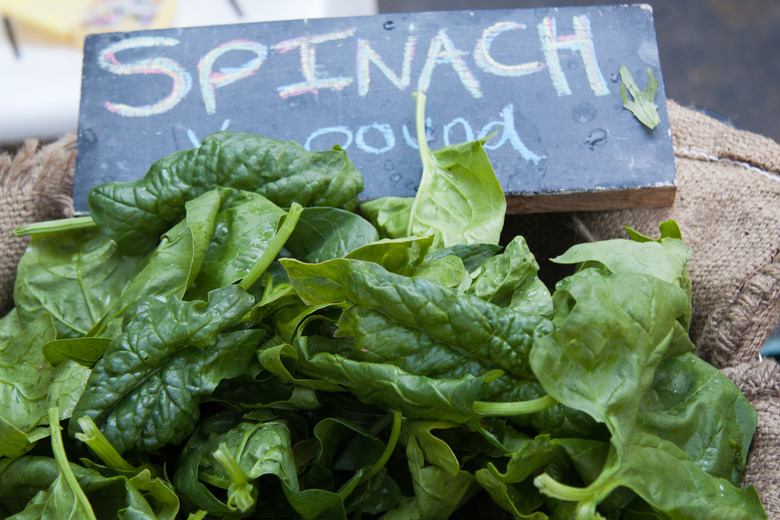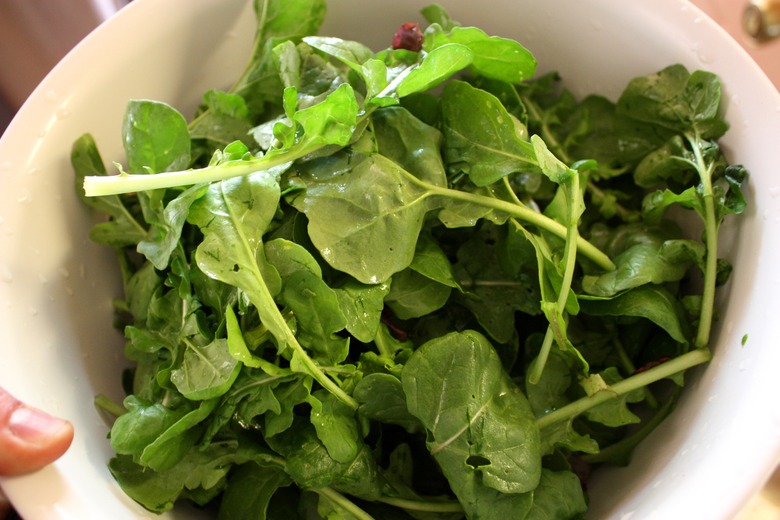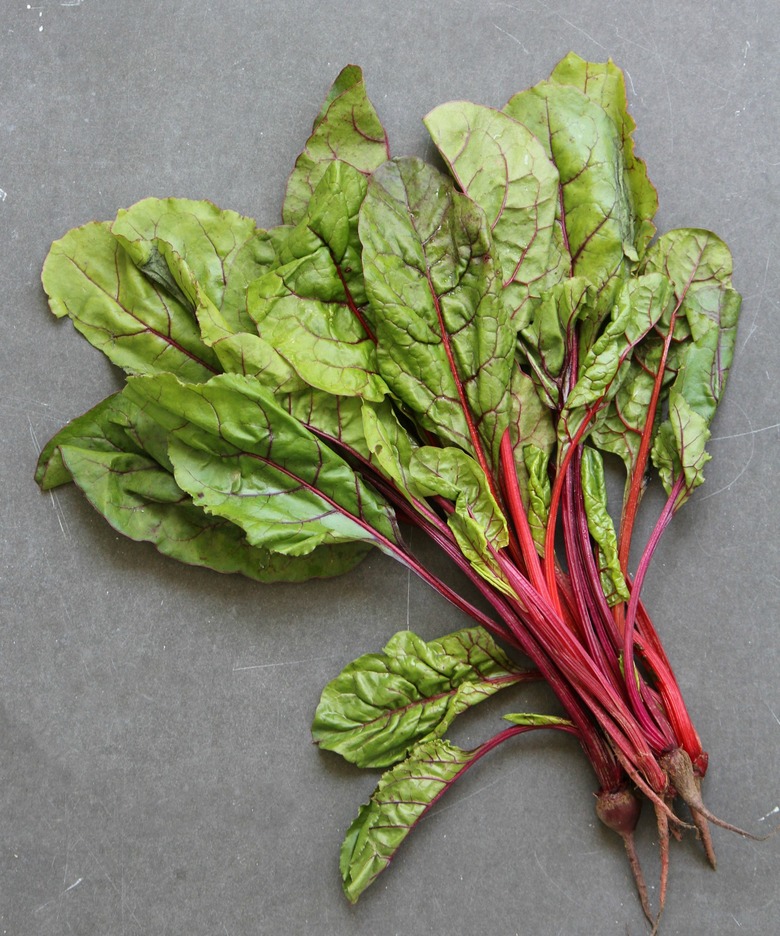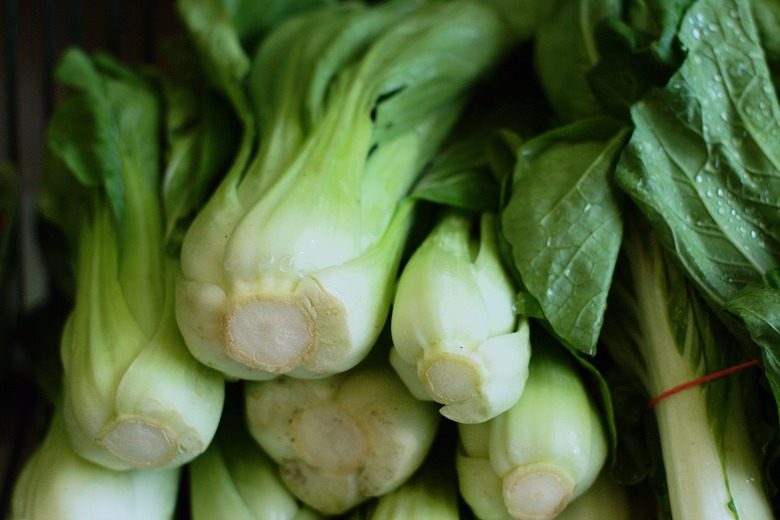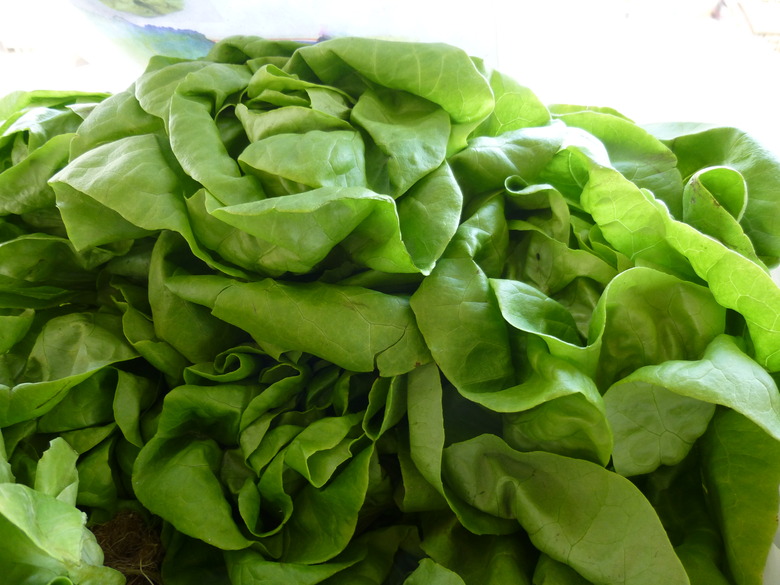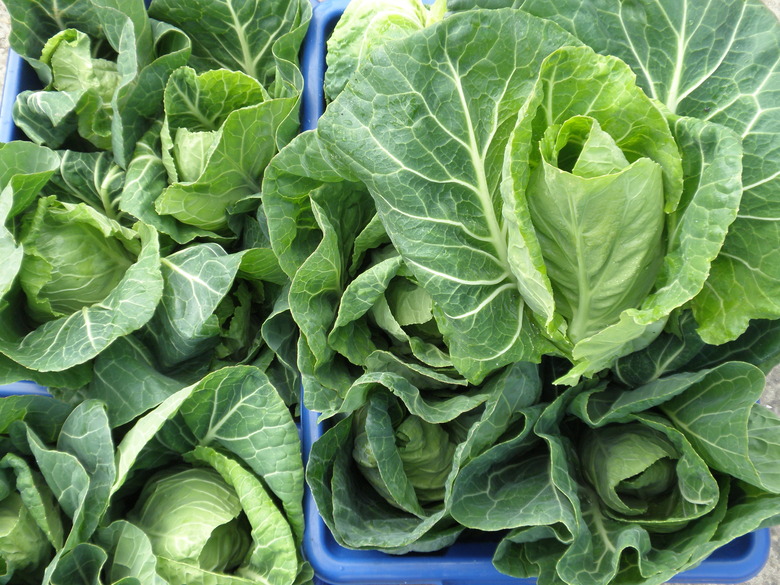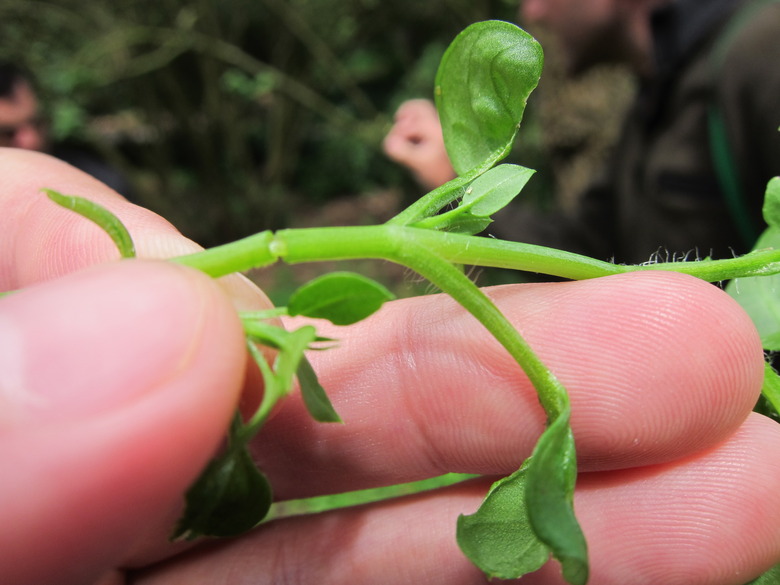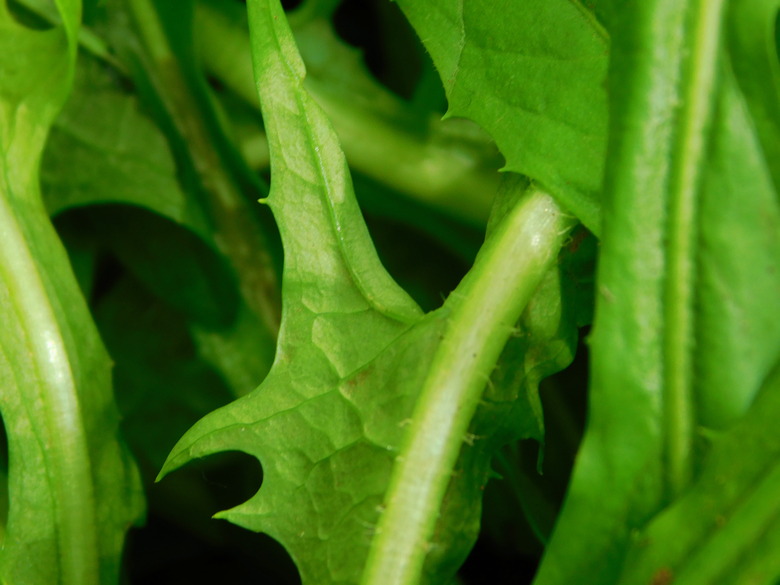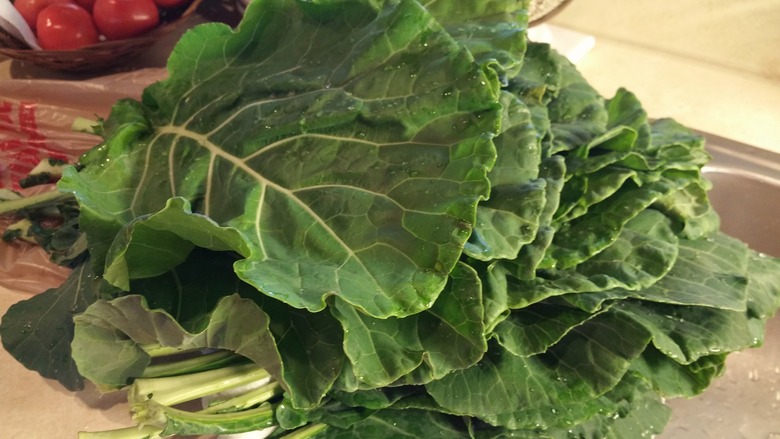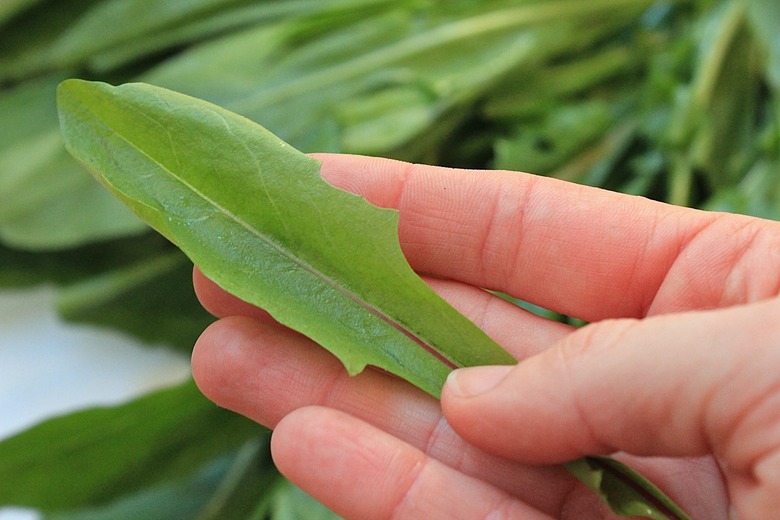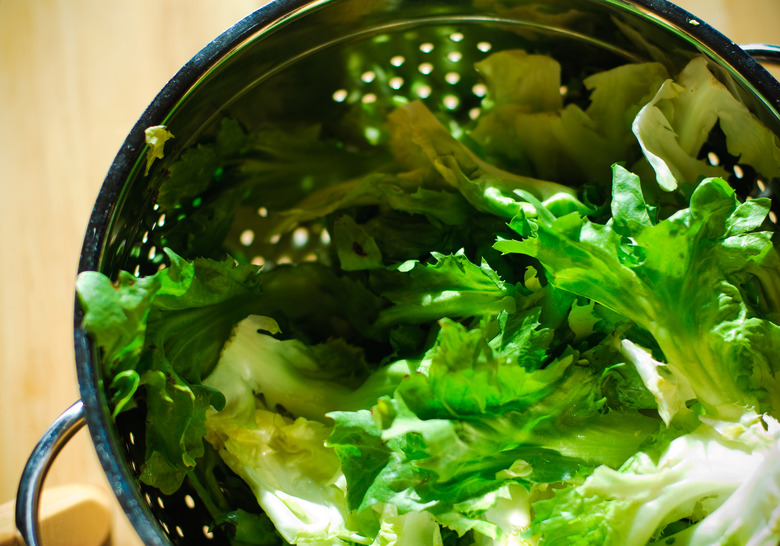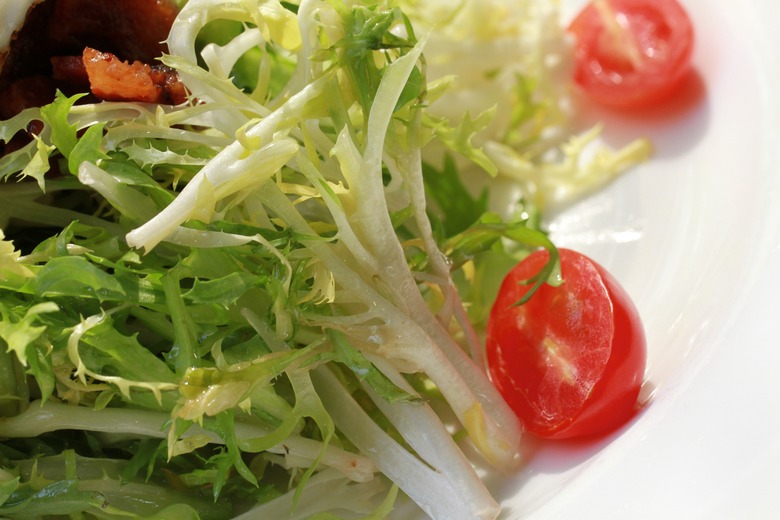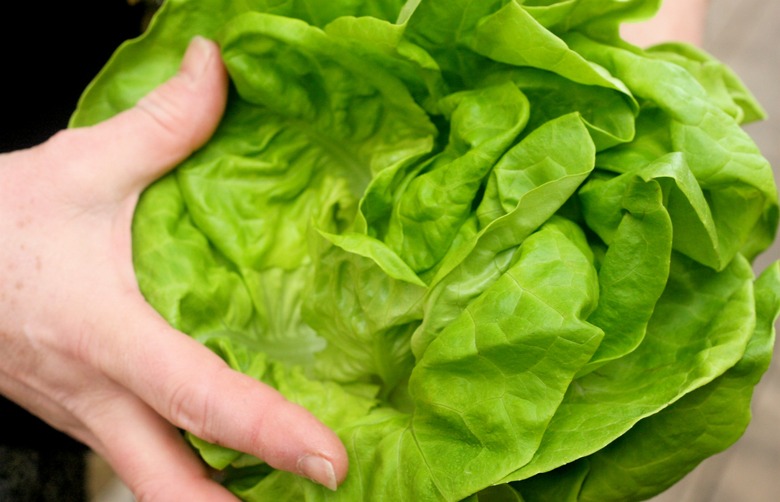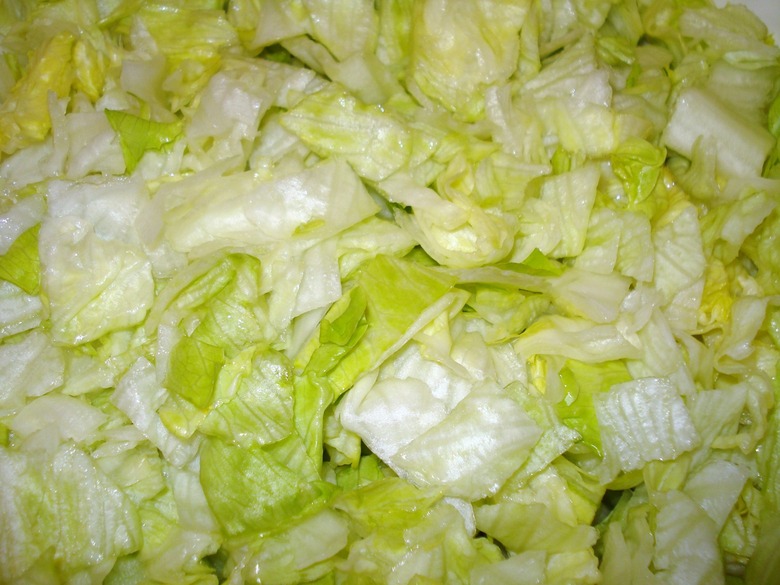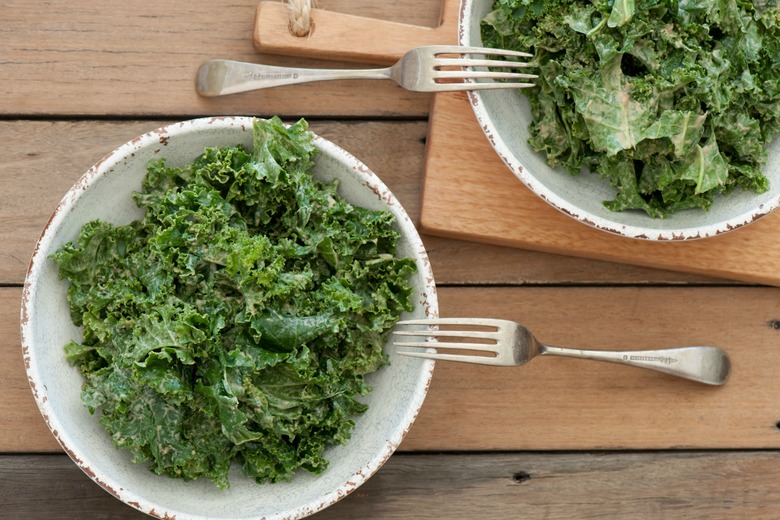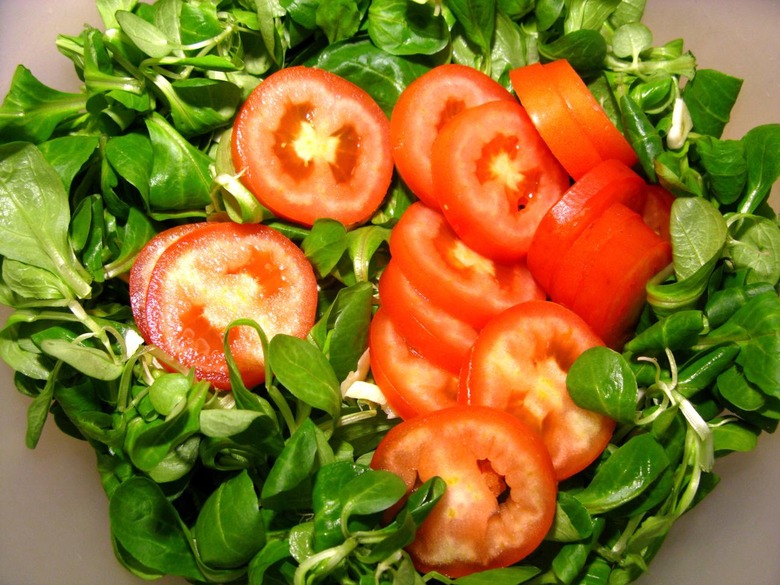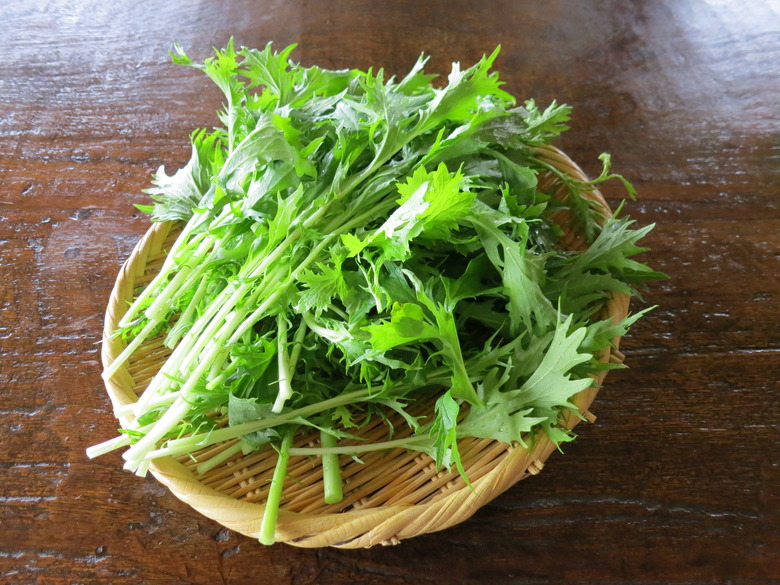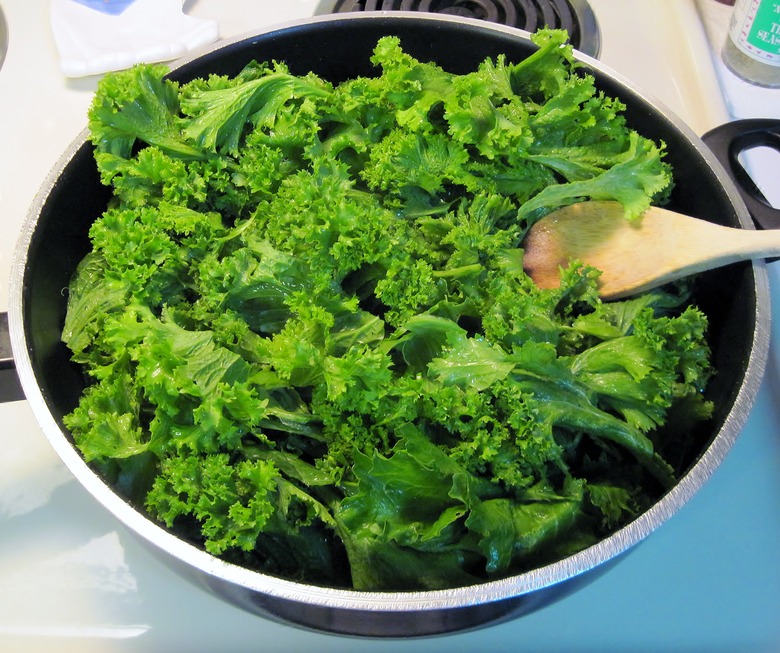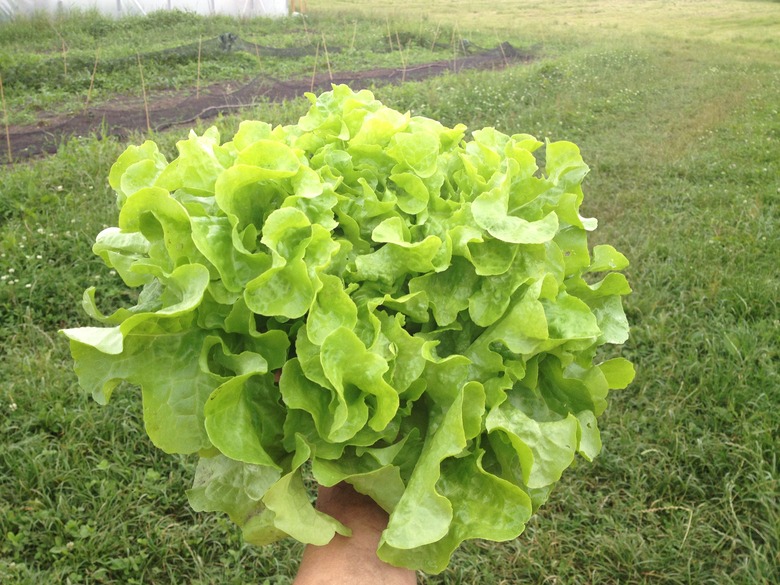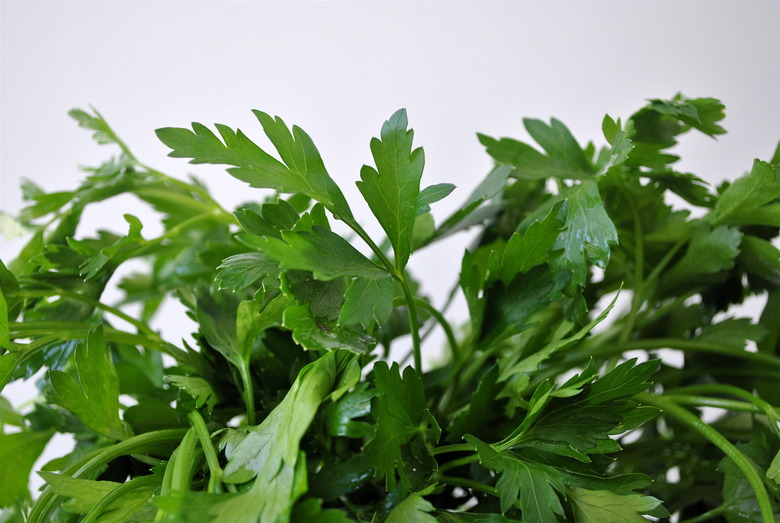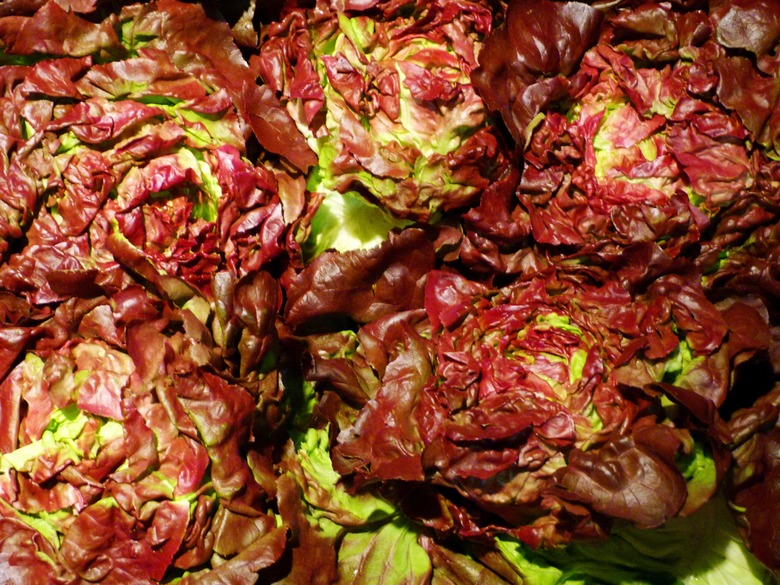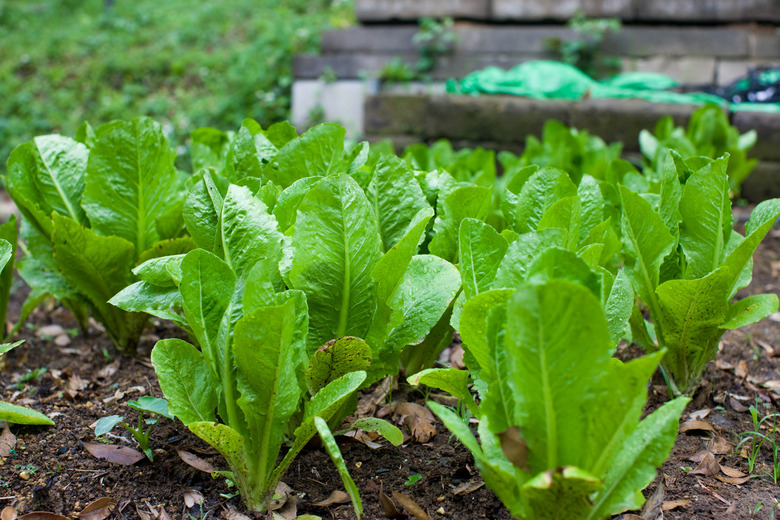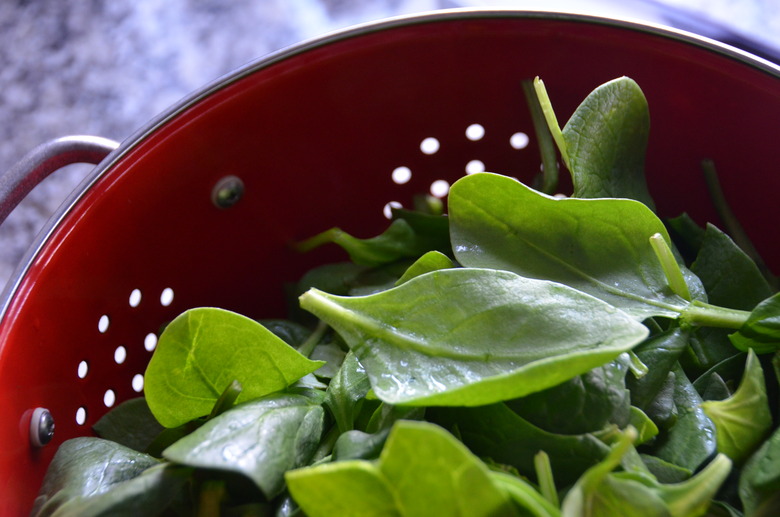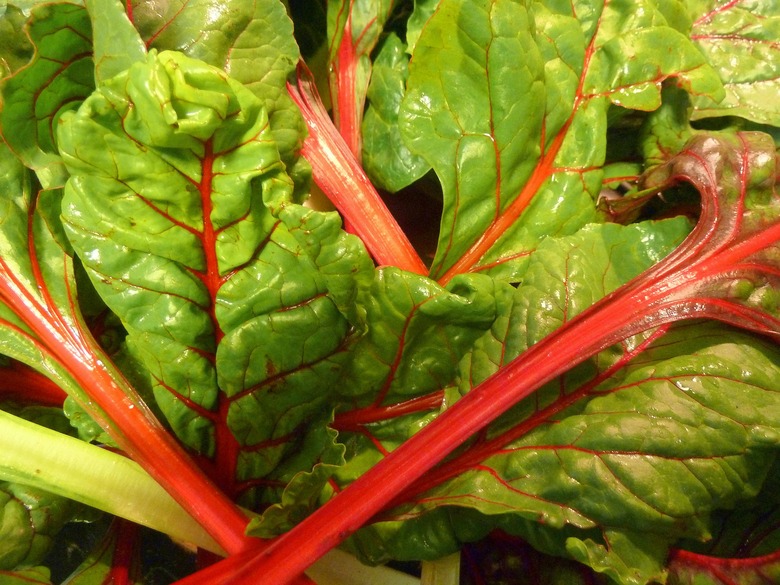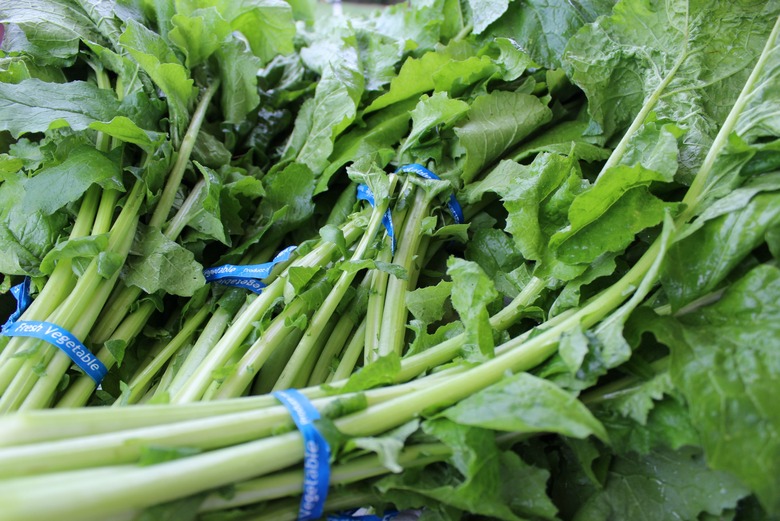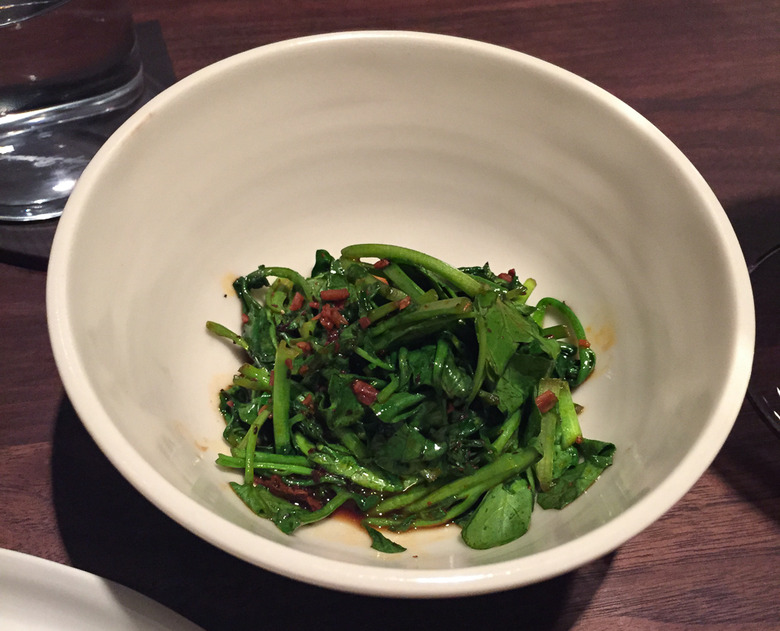All About Every Healthy Salad Green You'll Ever Want To Use
Let's discuss some edible leaf basics in order to prime you for the following greens descriptions: Loose and open leaf lettuces like romaine, butterhead, and red leaf lettuce have darker colors than, say, iceberg. The darker the leaf, the more able it is to absorb sunlight. Just like humans can get valuable vitamin D from sunlight, darker leaves can synthesize more vitamins from the sun, resulting in the appearance of more nutrients. Thus, the darker leaves on the list should inherently contain more cancer-fighting antioxidants and valuable vitamins and minerals.
If you decided to try these greens in a salad (perhaps in one of our 50 Sensational Salad Recipes), we suggest rinsing them in cold water first. Compared to other vegetables, leafy greens have a greater tendency to accumulate dirt and other nasty substances in the nooks and crannies of their folds. (And don't think that just because something is organic it needn't be washed; manure is organic — need we say more?)
Get your salad bowl out, because we've got an extensive list of the greens you can use in salads, and we'll tell you a little bit about the nutritional value of each one, too.
Arugula
Arugula is one of the dark green greens. While it's not quite as common as other leafy green, you should make eating it a priority: It's rich in vitamins A and C as well as calcium and fiber. You'll love arugula's peppery taste as a salad base in these recipes.
Look for bright green leaves when selecting arugula, as yellowing is a sign that it's a little past its prime. Serve in a simple salad, packed into a panini, or sautéed with your favorite pasta toss.
Beet Greens
Beets are one of the hippest foods of 2016, but don't limit your beet intake to the meaty, bulbous, purplish-red part. Try out the green, leafy portion in order to boost your iron intake and improve eye health (these are rich in the carotenoid lutein which has been shown to play a crucial role in retina health). We've got some beet greens recipe ideas here.
Bok Choy
Bok choy, which you may find listed on menus and ingredients lists as Chinese cabbage, is a healthy cruciferous vegetable that has been and is still trending. With so many ways to consume bok choy, it's no wonder so many people have recently discovered it. It's rich in antioxidants (especially beta carotene, which can help to ward off various diseases), packed with both vitamin A and C, and can be sautéed, stir-fried, or tossed into a salad raw after being washed.
Butterhead
Any recipe with the dark lettuce called butterhead will benefit from the sweet, almost buttery flavor and fine, delicate texture of this green. Also called Boston lettuce, butterhead is incredibly low in sodium (more so than other greens, though they're all naturally low in sodium as well), rich in vitamins A and K, and has one gram of iron per 100 grams of leaves (roughly 12 percent of the daily value for men and five percent for women).
Cabbage
Another member of the cruciferous vegetable family, cabbage is paler in color than its dark, leafy cousins. It's still has many, versatile uses in recipes and is packed with vitamin C. Along with vegetables like broccoli, Brussels sprouts, and cauliflower, this wonderfully inexpensive vegetable has been shown to be a great cancer-fighter. The glucosinolates found in cabbage can be converted into compounds that help prevent bladder, breast, colon, and prostate cancers.
Chickweed
These edible green leaves are one of our 10 Plants You Can Eat to Survive in the Wild, but they're also a great food to forage for to make salads at home. You can find it virtually anywhere — your backyard, between cracks in the pavement, in flowerbeds, and especially in the wild. It grows year-round and is hardy despite its delicate appearance. This green leaf has a lot of health benefits and is full of vitamins (especially A, B, and C), minerals (calcium, magnesium, manganese, zinc, iron, phosphorus, and potassium, to name a few), and other essential nutrients.
Chicory
While chicory root may be one of the best ways to add fiber to your diet, the leaves of this dandelion relative contain a decent amount of protein for greens (nearly two grams per 100 grams of leaves) and are packed, like most items on this list, with vitamins A and C. You may be familiar with Italian chicory or radicchio, a reddish-purple cousin (with a distinctly white pattern of "veins" on the leaves) of chicory greens which has a relatively bitter, spicy taste. Try out some of our best chicory recipes or a dish from our selection of radicchio recipes.
Collard Greens
While this cruciferous leafy green vegetable, quite commonly enjoyed in the southern United States, is often consumed after being cooked, you can enjoy collard greens raw. They're relatively mild and rich in vitamins A, C, and K as well as folate.
Dandelion Greens
These edible green leaves are a favorite amongst foragers. Able to be used in a variety of dishes, dandelion greens have a bitter, tangy flavor and are rich in vitamin A and calcium. Not so bad for what many people brush off as just a weed, if we do say so ourselves.
Escarole
Any recipe including escarole, a member of the chicory family (and closely related to frisée), will benefit from the high levels of dietary fiber and antioxidants in each dark-green leaf. Packed with vitamins A and K, escarole is a staple of Italian cuisine. Look for it while dining at one of America's 50 Best Italian Restaurants.
Frisée
You may know frisée as curly endive, chicory endive, or curly chicory. It has a slightly bitter flavor and is often enjoyed in salads as well as other dishes. It's an excellent source of vitamins A and C as well as folic acid. You'll also find vitamin K and manganese in fairly good levels while enjoying this leafy green.
Green Leaf
Green leaf lettuce, darker than iceberg but not quite as richly nutritious as kale, still manages to contain about 53 percent of your daily vitamin A intake and 78 percent of your vitamin K intake in a five-calorie, one-cup serving. Try this Green Leaf Lettuce, Pomegranate, and Almond Salad recipe.
Iceberg
This pale lettuce doesn't do much to tip the vitamins and minerals scale, making it just one of many deceivingly unhealthy salad bar ingredients. What it lacks in nutritional value it (sort of) makes up for in hydrating properties, as 96 percent of iceberg is made up of water.
Kale
This cruciferous leafy green vegetable has been at the forefront of healthy, trendy eating for as long as millennials can remember. It's rich in vitamins A, C, and K, and its bitter flavor is often masked in smoothie recipes. We know you're familiar with kale salads, but try one of our 11 Ways to Use Kale You Haven't Thought of Yet.
Mâche
Also known as field salad, lamb's lettuce, corn salad, field lettuce, or fetticus, mâche is teeming with vitamin C and eye health-promoting vitamin A. It can be used in a variety of recipes. While the mildly sweet flavor of mâche is quite desirable, its leaves are small, rendering it an expensive salad base. (You'll often find it sold with its soil still attached.)
Mizuna
This Japanese mustard green is typically sold as part of a premade salad mix, but can be purchased loose at many of America's best farmers markets or in a specialty shop. You may find it listed as shui cai, kyona, Japanese mustard, potherb mustard, Japanese greens, California peppergrass, or spider mustard. Each leaf has a strong flavor and is rich in vitamin C and folate. Try mizuna in one of these recipes.
Mustard Greens
These cruciferous vegetables are rich in cancer-fighting glucosinolates and can help you lower your cholesterol. Their taste is somewhat bitter and peppery, so don't expect the same flavor as a handful of baby spinach when eating mustard greens. They're great when sautéed, but consider trying them in a variety of different dishes.
Oakleaf Lettuce
Why is oakleaf lettuce called oakleaf lettuce? Simple: Its leaves are shaped like oak leaves. It has a relatively bland flavor, and its nutritional profile highlights include being rich in antioxidants and having a great propensity to help fight high cholesterol levels. Try one of our many oakleaf lettuce recipes.
Parsley
While you probably won't find many salads using parsley as a base, it's commonly used as a garnish on salads and many other dishes. Like many of the common dark, leafy greens used as salad bases on this list, this relative of carrots, celery, dill, and fennel is rich in vitamins A, C, and K as well as folate. The power of parsley is vast, and we suggest chopping some up and adding more healthy greens to your salad.
Red Leaf Lettuce
Red leaf lettuces sort of look like one of your uncle's old tie-dyed Grateful Dead shirts: They fade from a dark, deep, reddish purple at the top of the leaf to a lighter green down near the stem. While red leaf lettuce varieties contain a decent amount of vitamin A, these salad bases are calorie-free. If you're looking to get in shape for summer, making a salad base with red leaf lettuce may be your new go-to healthy move.
Romaine
At just 10 calories per one-cup serving and less than one gram of carbohydrates, this common dark green lettuce could seemingly be consumed by the pound. With such little impact on calorie consumption, it's incredible that romaine still contains 29 percent of the vitamin A, 22 percent of the vitamin C, and 71 percent of the vitamin K recommended by the USDA.
Spinach
Spinach should be your favorite dark leafy green. Why? It's perfect in terms of nutrition and benefits. This relatively sweet green is rich in vitamins A, C, and K and is also a good source of folate and iron. Some sailors have experienced incredible muscle growth while consuming large quantities of canned spinach, but there have been few studies done investigating the link between dark leafy greens and seafaring men. It can be used in seemingly endless ways, including but not limited to our 6 Best Spinach Recipes, and is easily enjoyed in its smaller form, baby spinach.
Swiss Chard
While doing a leafy green taste test, you may not be able to taste the difference between Swiss chard and spinach. As long as you can avoid a package of Swiss chard with a gecko in it, you'll be able to enjoy a tame salad experience by choosing this green which is rich in vitamins A, C, and K, as well as minerals like potassium and iron. Other than raw in salads, Swiss chard can be enjoyed sautéed, stir-fried, or in soups.
Turnip Greens
Pro leafy salad greens tip: Buy your turnips with the green tops on in order to get two separate vegetables packed into one. Considered a delicacy in the American south, turnip greens are tender, packed with vitamins A, C, and K, and require very little cook time. Along with their stellar nutritional profile, turnip greens have a bold flavor and can be enjoyed in a variety of healthy dishes. If you're not eating them raw, you may want to steam them in order to increase their "bad"-cholesterol-fighting properties.
Watercress
Like kale, mustard greens, and turnip greens, watercress is an edible green leaf which is part of the cabbage family. Watercress's distinct sour, peppery taste (making watercress a great alternative to arugula) is best enjoyed raw, and it's packed with vitamin K, is linked to cancer prevention, and can act as a diuretic. Try one of our salads, sandwiches, or sliders featuring watercress.
